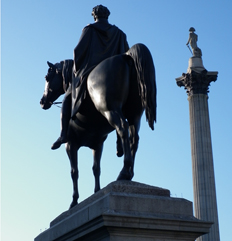Wilhelm Moerz was aged 35 but looked younger. Well dressed, about five foot 10, hair ‘sparse and fair’, pale, slight build, prominent teeth, projecting jaw. He had at least three aliases and possibly a forged passport. This ‘dangerous Gestapo agent, ‘possibly armed’, may have entered as a refugee, so the police alert went out to British ports on May 26, 1940.
Moerz – or whatever he was calling himself – spoke English well, ‘but cannot be mistaken for an Englishman’. It turned out later in the year that he had an English passport in the name of Collins.
In the summer of 1940, when Britain feared invasion by sea and air, the air was rife with spy scares, mostly unfounded and only arising from over-excited or overly suspicious citizens. Yet here in the files of the National Archives at Kew in west London – file KV 2/2106, free to download from the ‘Discovery‘ part of the Archives’ website during the coronavirus lockdown – is a real spy in the heart of London.
An MI5 agent had seen Moerz on May 25 – Saturday afternoon – getting into a taxi in Regent Street. MI5 rang the Metropolitan Police Special Branch, and sent photos by despatch rider to the duty Insp Hunt, for SB officers to show around hotels. At the Cumberland in the West End, a receptionist clerk recognised man as having stayed there at the end of March. The man had sent a cable signed Novak. The receptionist at nearby Mount Royal also recognised the face, though could not put a name to it; but again, the wanted man was there about six weeks ago, in company of a ‘good looking woman’. That was a ‘dance hostess’ by the name of Karland.
Moerz had been arrested in Holland as an enemy agent but had escaped in the confusion of the Nazi invasion of mid-May 1940. He presumably had arrived in Holland from Britain only weeks before; and appeared to have arrived at Croydon, on May 23, from Rotterdam, posing as a refugee; or on a boat or as a stowaway.
While the question of how Moerz had got into the country was of some importance, to plug any gap, the priority for the Security Service and police was to find their man.
MI5 asked that all Met CID officers be called out to look for him at all London hotels. Police could not do that – they were among other things vetting hundreds of thousands of men who were signed up to be ‘local defence volunteers’ against enemy parachutists – but two constables were evidently showing to hoteliers a photo of suspect because at the Cumberland Hotel, staff identified Moerz as Wilem Novak. He used to visit the hotel with Dawn Karland, indeed a ‘dance hostess’ at the El Morocco Club in Albermarle Street, where she met him; she lived in a flat at the hotel.
Karland was ‘interrogated’, on May 27. At first she denied ever knowing Novak, and as the police record tartly put it she was ‘evidently a woman who could forget a casual contact’. Then she admitted had tea with him at the Mount Royal, about six weeks before. It’s still a hotel and now the Thistle Marble Arch. He was calling himself Morris – German for Moerz?
The woman thought Novak, or Moerz, or whatever his name was, stayed in a Kensington hotel, went to El Morocco, and liked the West End night club life. Karland turned out to be ‘very anxious to help’ and took police to a woman friend who might know Moerz alo; who turned out to be a police informant. Hunt believed Karland was genuine and was not having her watched, which MI5 wrote was ‘more than disappointing’; although police may have known their beat better, and may have had too many other calls on their time.
As proof that police were on the right track, a few weeks earlier Moerz had met another hostess, Mrs Glen Coutts, at Murrays club, at 16-18 Beak Street, Soho, off Regent Street. That’s the famous or infamous night-spot where a generation later Christine Keeler met the government minister for war John Profumo (who in May 1940 was one of the young Conservative MPs who by voting against the Government caused the downfall of Neville Chamberlain as prime minister and fatefully brought in Winston Churchill). Coutts told police that the man went under name of Collins, and ‘seemed to visit night clubs and restaurants in the West End a good deal’.
At the Lanham Hotel, Kensington, police turned up the lead that Moerz under the name of Wilhelm Novak had stayed there in April and May 1939. By May 28, police, evidently not having found Moerz in London, sent all police forces in Britain via the printed Police Gazette, Moerz’s description and asked them to search hotels and arrest him. Police had photos of Novak’s signature from a Kensington hotel register. MI5 commented; ‘we are getting hot!’
A May 29 letter from MI5 to the Chief Constable of special branch, Albert Canning at New Scotland Yard, praised the police work so far; and stressed how significant Moerz was, ‘undoubtedly one of the cleverest secret agents the Germans have’. Moerz had been successful in Belgium and Holland and no doubt had entered Britain ‘to take charge of Fifth Column activities here’.
On the trail around London: part two.










